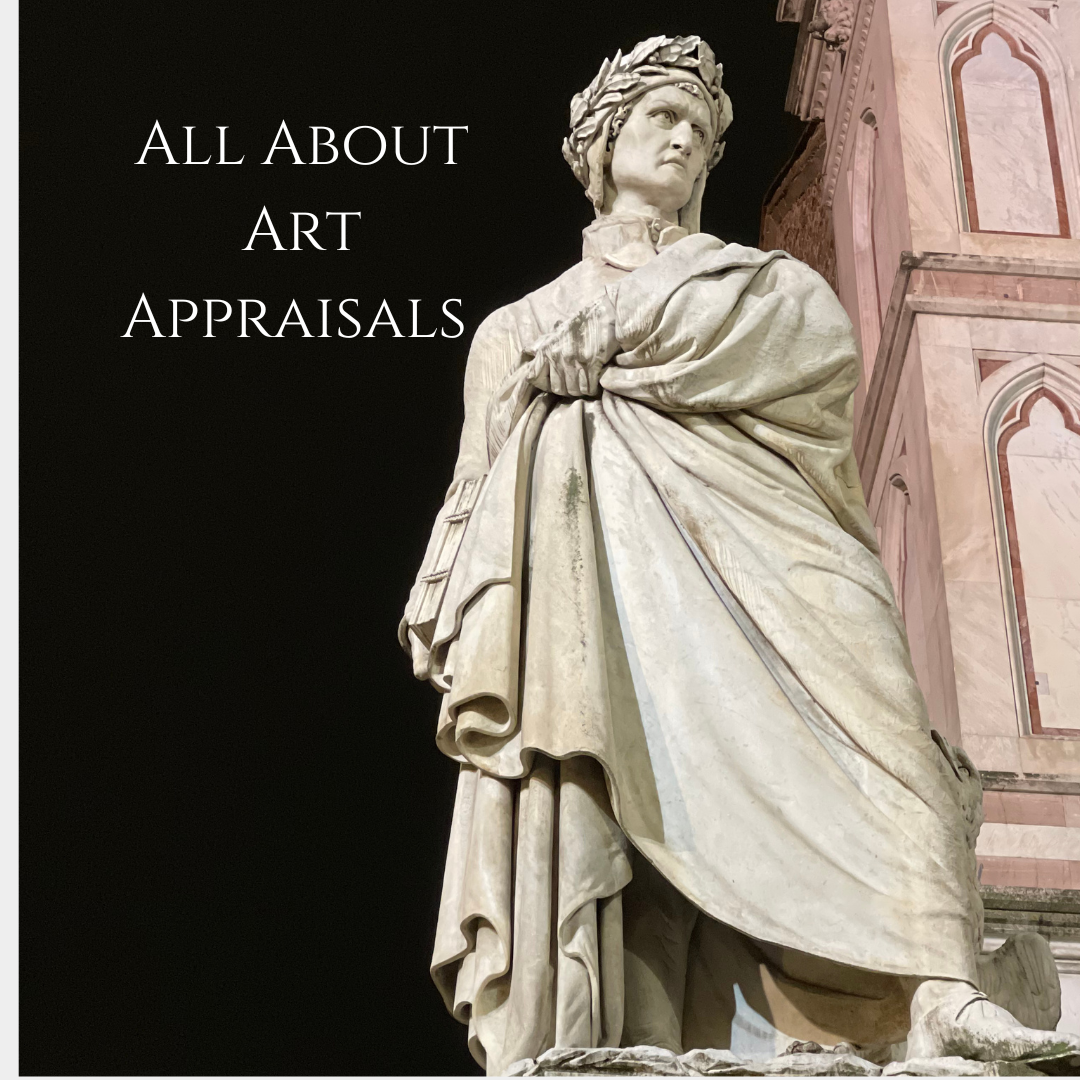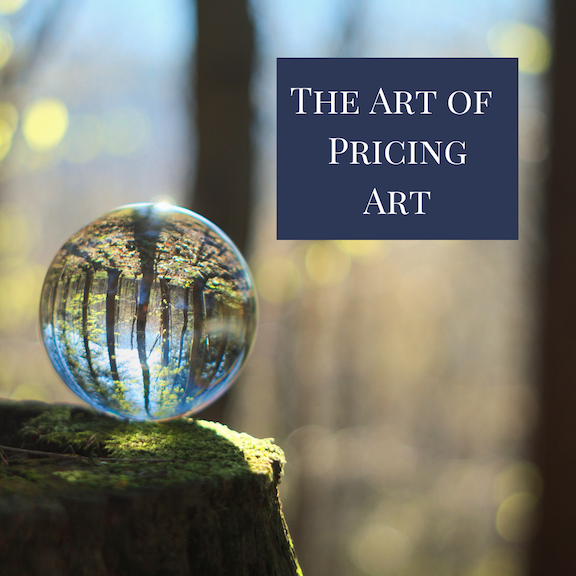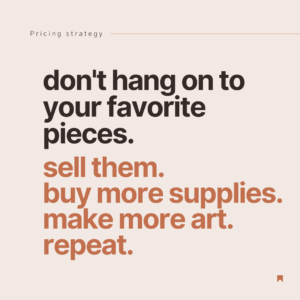Ever wondered whether you should have your collection of original art appraised?
No worries, we’re here to help. For starters, the answer is: yes, most definitely. Not only that, but you should have your art collection appraised every three to five years, sooner for really high-end works.
Let’s start with why.
Insurance Coverage
One of the top reasons collectors need an appraisal is for insurance. This kind of appraisal determines the “replacement cost,” i.e., the cost to replace art stolen or lost in a fire, for example. Check with your agent, but insurance companies don’t usually cover art without an appraisal.
A common misnomer: My art is covered under my general homeowner’s policy.
It is and it isn’t. Because people were gaming the system, insurance companies put a seriously low cap on coverage of art and jewelry under homeowner’s policies. You need a floater called a “personal article policy.” And the only way to get this is with either a replacement cost valuation/appraisal (see the rules for your state and insurance company) or you can have your art dealer supply you with a document indicating the current market value–replacement cost–for works they sold you.
For living artists, these values are established by the artist often with input from dealers who handle their work. For deceased artists, this value is established on the secondary market and at auction.
Note: Insurance appraisals always get collectors excited; the retail price for work they purchased years ago, for most artists, will have gone up over time, sometimes significantly. Collectors need to remember that they probably can’t sell this art for the prices they see on a replacement cost appraisal. (I discussed these reasons in a blog about buying and selling at auction.)
The 3 Ds: Divorce, Debt, Death
Division of property. We’re talking divorce, debt, and death. As if these situations weren’t bad enough, now you have to pay someone to appraise your collection (or your family member’s collection) only to divvy it up. These appraisals are done to establish the “fair market value,” which is the amount each work of art would sell for between a willing buyer and seller. This is not the replacement cost; there is a difference, sometimes are very big difference.
Estate appraisal. These appraisals are required for probate dealings. There is a threshold an estate needs to meet before an appraisal is required by the IRS. Check with your accountant to determine whether the fair market value of the real and personal property included in the estate exceeds the annually established unified credit exemption.
Donation. Donating art to museums or institutions such as your alma mater serves the dual purpose of being both altruistic and a great tax write-off. Most institutions will request an appraisal before accepting donations. You’ll also need an appraisal for your accountant when tax time rolls around. These fair market appraisals come closer to replacement value but use auction records more heavily when determining value.
What to Look for in an Appraiser
In many states, appraisers of art do not have to be licensed to do replacement valuations for insurance. They do, however, need to have substantial market knowledge, which is why you can often find gallerists and curators doing these kinds of appraisals. Check the laws of your state before selecting an appraiser for insurance valuations and ask your insurance agent for his or her requirements. Most other appraisals will have to be done by a licensed appraiser.
No matter what kind of appraisal you require, it’s wise to look for an appraiser with specific knowledge of the art you collect. While appraisers can certainly sleuth out the valuation of most anything, some appraisers specialize in disciplines, such as Western art or Bauhaus furniture, jewelry or antique farm equipment. There are lots of factors to consider when determining valuation, so having someone with deep market knowledge will ensure the best results.
Do ask for recommendations and check online with the national and international associations of appraisers. You can also ask museum curators and gallerists you know, and even your insurance agent for referrals.
What to Expect
Appraisers will give you a letter of intent that explains how they work and how they charge–usually by the hour. Rates are fairly standard but vary from state to state. Plan for the appraisal to run $125 to $350 an hour.
Do not ask your appraiser to turn around and sell art for you. This is a major conflict of interest. If you want someone to sell your collection, you want an art adviser not an appraiser.
Get a Head Start
There are some great online tools to help keep track of your art, such as Airtable and My Art Collection. (Check out the link to Rose’s premade Airtable stocked with everything you need to get started.) Keeping your records in an orderly and central location will help your appraiser create an accurate repost and save time. Here’s a handy list of the key elements to track.
- Artwork title. Don’t make this up. Often, the artist will have written the title on the back of a painting or along the base of a sculpture. If no title exists, call it “untitled” or “title unknown” and give it a small description.
- Size of the image and outer size of the frame, height by width. For sculpture, add depth. Note: art dimensions are always listed in this order: height by width by depth.
- Medium–oil, pastel, watercolor, bronze, etc. And list the specifics of the substrate, if you know it, such as “oil on linen,” or “c-print mounted on card.” If you’re not sure, call an artist; they will know immediately what you’ve got.
- Year the artwork was created. If you don’t know exactly, list the approximate date, and toss the word “circa” after to denote that you’re pretty sure it was done close to this year.
- What you paid. If you have the invoice and are uploading things in a spreadsheet, consider taking a scan or photo of your sales records, and add them to the digital file.
- Where you purchased the artwork. This establishes a lovely trail called “provenance.” Over time, provenance established the importance of the work and, thereby, it’s value. If a work of art you own has been shown in a museum or major exhibition, make sure you keep record of that and leave the museum tag, if one was placed on the back of the work, exactly where it is. (By the way, if a museum wants to borrow something, for goodness sakes, say yes! This supports the artist and your collection.)
- Frame on painting or base of sculpture. Add details like closed corner or chop frame (where you see the joined corners), gold leaf, compo ornamentation, etc. And note whether the frame is original to the work of art. If you are unsure, no worries. Just include a photo of the frame.
- Note whether a painting is under glass or plexi, museum grade, UV, etc.
- Detail any dings or mars to the frame or artwork surface, as well as discoloration or creases to works on paper.
- Photographic documentation. You don’t need to take print worthy pictures for your records. In fact, iPhone pics are pretty darned good. The main aspects to document are the front and back of paintings. For sculptures, get photos from three to four angles. For all art, take a closeup of the signature and get at least one overall photo in the frame or of the sculpture and it’s base. If the frame is really special, get a couple closeups of corners or compo designs.
When taking pictures of paintings under glass, try this trick: using ambient light, lay the work flat on the ground, shut off overhead lights that are reflecting off the glass, then shoot down. You may have to move your body a bit until you find the best spot with the least reflection–or try standing on a chair–but the smart phone camera auto adjusts for low light.
Again, don’t forget to take a photo of the back of 2-D work. Sometimes the back of a painting is more intriguing than the front! Any writing, signatures, and labels from galleries or exhibitions help support the work’s provenance.
Airtable
I keep track of my collection and those of clients online, in Airtable. If you’re not familiar with Airtable, you really need to check it out. It’s a free, open-source application that has tables for just about anything you can think of. It’s basically Excel on speed. Here’s a link to my layout for collectors: Rose’s Art Collection Base.








